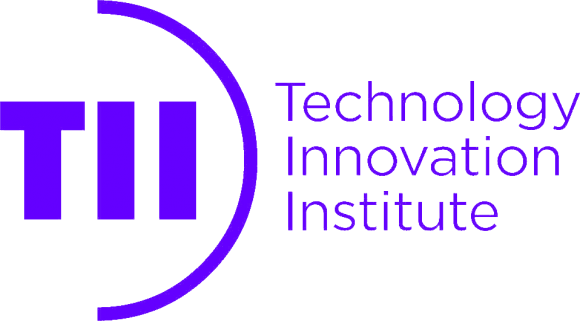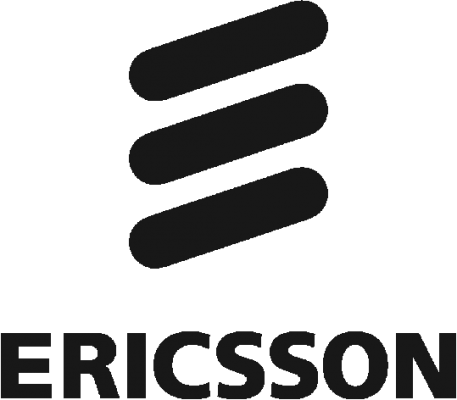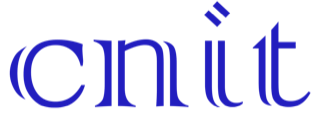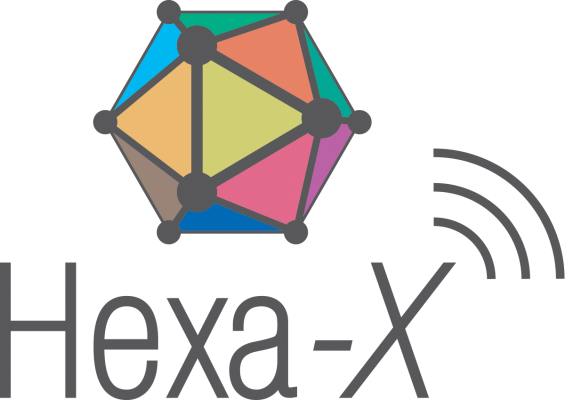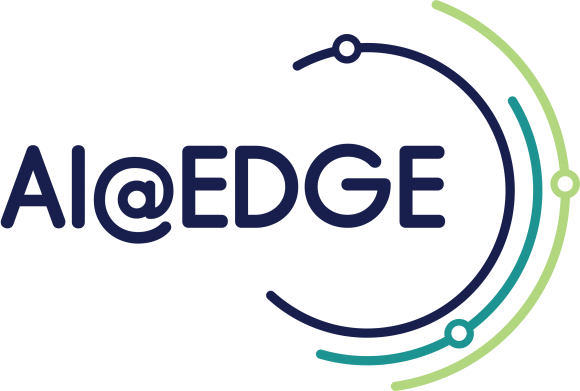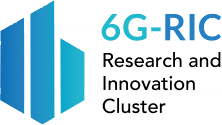Monday, 29 May 2023 // 11:30-13:00 CEST
Panel 1: Electromagnetic Information Theory: Theoretical Foundations for the Massive MIMO Evolution
Tuesday, 30 May 2023 // 11:30-13:00 CEST
Panel 2: IEEE Future of Wireless Channel Model Standards
Wednesday, 31 May 2023 // 11:30-13:00 CEST
Panel 3: Non-Terrestrial Networks for Global Sustainable Connectivity
Panel 1: Electromagnetic Information Theory: Theoretical Foundations for the Massive MIMO Evolution
Date: Monday, 29 May 2023
Time: 11:30-13:00 CEST
Location: Cloud Auditorium
Description: In the past ten years, massive multiple-input multiple-output (MIMO) has been developed rapidly from a theoretical concept to a practical technique and greatly enhanced the performance of 5G wireless communications. In the future, in order to meet the immensely higher data rate, reliability, and traffic demands in the future 5G-Advanced wireless communications, novel architectures and frameworks beyond massive MIMO are rapidly emerging to fully utilize the electromagnetic waves to improve the performance of wireless communication systems, including holographic MIMO, extremely large antenna arrays (ELAA), reconfigurable intelligent surfaces (RIS), Orbital Angular Momentum (OAM), cell-free MIMO, etc.
However, current analysis and design methods for massive MIMO are usually based on the scalar-quantity, far-field, planar-wavefront, monochromatic, and other non-physically consistent assumptions, which may cause mismatches between the system design and the realistic propagation environment in the novel architectures beyond massive MIMO. To solve this problem, the emerging electromagnetic information theory (EIT) is proposed and has attracted increasing interests from both academia and industry. By integrating the statistical information theory with the deterministic electromagnetic theory, it is able to build a more physically consistent communication model and establish more fundamental limitations for the massive MIMO evolution. It is expected that EIT will bring brand new theoretical analysis and system design paradigms to future wireless communication systems.
Since researches on EIT-based theoretical analysis, signal processing, channel modeling, antenna design, and standardization are still in the early stage, it is essential to establish a clear vision and provide guidance for worldwide academic researchers and industrial partners. Thus, we believe this session will bring a good opportunity for both academia and industry to exchange views on the theoretical foundations for the massive MIMO evolution.
Moderator:
Tengjiao Wang
Tengjiao Wang is a principal research engineer and assistant chief scientist with Wireless Network RAN Research Department, Huawei Technologies CO., Ltd, China. He received his B.S. and Ph. D. degrees from Tsinghua University, Beijing, China and was a visiting scholar with Massachusetts Institute of Technology, Cambridge, MA, USA. His research interests lie in the fields of 5G-Advanced wireless communications, electromagnetic information theory, visible light communications, and machine learning for wireless communications. He has organized many international activities on electromagnetic information theory, including the workshops at IEEE VTC2022-Spring and IEEE VTC2023-Spring, and the industry panel at IEEE GLOBECOM 2022.
Panelists:
- Thomas L. Marzetta, Director of NYU WIRELESS, New York University, USA
- Mérouane Debbah, Chief Research Officer, Technology Innovation Institute, Abu Dhabi, UAE
- Tiejun Cui, Professor, Southeast University, China
- Luca Sanguinetti, Associate Professor, University of Pisa, Italy
- Linglong Dai, Associate Professor, Tsinghua University, China
- Tengjiao Wang, Principal Research Engineer, Huawei Technologies, China
Panel 2: IEEE Future of Wireless Channel Model Standards
Date: Tuesday, 30 May 2023
Time: 11:30-13:00 CEST
Location: Cloud Auditorium
Description: Wireless channel models represent the cornerstone of wireless system design and are especially needed now that the search for new spectrum resources is becoming very urgent. It is a common practice within the standardization process to test new wireless system proposals against standard channel models to allow fair and accurate performance comparisons and to fully highlight the potentials and limits of the proposed techniques.
There are currently two main types of standardization efforts on matter of Wireless Channel Models:
(i) activities within a certain wireless channel standard, such as 3GPP, ITU, IEEE 802.11/15. The goal of these models is the comparison of system proposals under very specific, circumscribed conditions, privileging models and approaches of low computational complexity and high backward compatibility, rather than the absolute performance evaluation;
(ii) activities for the establishment of measurement and modeling technology, such as the NextG channel alliance or the IEEE SA WG P2982 on Millimeter-Wave Channel Sounder Verification. This has a very high level of detail but is intended for a restricted range of frequencies and applications.
The IEEE ComSoc set up a new group for the standardization of wireless channel models. This step is motivated not only by the well-recognized importance of channel models for wireless systems, but also the gaps that exist in ongoing activities in other organizations. This new effort in ComSoc does not aim to compete with existing activities in groups, and NextG channel alliance, but rather to complement it, by providing a wider purview than the existing standardization activities and establishing recommendations for channel parameters and models and establish a library of MATLAB or other software platforms for that purpose.
The RCC Special Interest Group on Propagation Channels for 5G and Beyond proposes to discuss about the pathways towards the definition of such a common framework for standardization efforts in wireless channel modelling in a technical panel session in ICC 2023 where five experts on channel modelling, representatives of different stakeholders, like ,e.g., standardization bodies, measurement equipment suppliers, planning tools companies, and academia, will share their points of view and approaches to understand whether a common approach is possible and likely sketching a roadmap and a common baseline.
View the Session Program Schedule
|
Panel 2 |
|
|
Monday, 30 May |
|
| 11:30 - 11:35 | Welcome Dajana Cassioli, Chair of RCC SIG on propagation Channels for 5G and Beyond, University of L’Aquila, Italy |
| 11:35 - 12:00 |
Talk 1 – Standardization Body Leszek Raschkowski, Research Associate at Fraunhofer HHI, Berlin, Germany |
|
Talk 2 – University Prof. Chong Han, Shanghai Jiao Tong University, China |
|
|
Talk 3 – IEEE ComSoc Standardization Group on Wireless Channel Modelling Dr. Chris R. Anderson, IEEE ComSoc Standardization Group on Wireless Channel Modeling, US Naval Academy, USA |
|
|
Talk 4 – Equipment Supplier Taro Eichler, Rohde & Schwarz |
|
|
Talk 5 – Planning Tool Company Tarun Chawla, Remcom Inc., USA |
|
| 12:00 - 12:10 | Interactive Session with the Attendants (mentimeter.com or other tools) |
| 12:10 - 12:50 | Live Panel Discussion with all invited speakers: Roadmap and Common Baseline Definition |
| 12:50 - 13:00 | Closing Remarks |
|
Moderator |
Dajana Cassioli, Chair of RCC SIG on propagation Channels for 5G and Beyond, University of L’Aquila, Italy |
Organizers:
Andreas F. Molisch
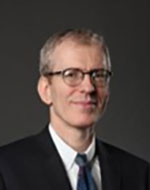 Andreas F. Molisch is Professor and Solomon Golomb – Andrew and Erna Viterbi Chair at the University of Southern California. He has been working on wireless propagation channels for more than 25 years, leading, or contributing to, a variety of standardization groups, and authoring a number of academic papers in this field. Among his contributions is the double-directional channel model for MIMO systems that is now used in essentially all modern channel models. He is a Clarivate Highly Cited Author (his h-index is > 100), an IEEE Distinguished Lecturer, Fellow of NAI, IEEE, AAAS, IET, Member of the Austrian Academy of Sciences, and recipient of numerous awards.
Andreas F. Molisch is Professor and Solomon Golomb – Andrew and Erna Viterbi Chair at the University of Southern California. He has been working on wireless propagation channels for more than 25 years, leading, or contributing to, a variety of standardization groups, and authoring a number of academic papers in this field. Among his contributions is the double-directional channel model for MIMO systems that is now used in essentially all modern channel models. He is a Clarivate Highly Cited Author (his h-index is > 100), an IEEE Distinguished Lecturer, Fellow of NAI, IEEE, AAAS, IET, Member of the Austrian Academy of Sciences, and recipient of numerous awards.
Dajana Cassioli
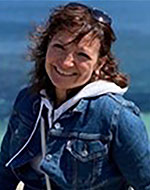 Dajana Cassioli is an Associate Professor of Telecommunications Engineering at the DISIM - University of L'Aquila, Italy. She is the Chair of the WIE AG of the IEEE Italy Section. Her research interests span over wireless communications, 5G/B5G Networks and Cybersecurity. She is the Coordinator of L'Aquila’s Node of the CINI National Laboratory on Cybersecurity. In 2010 and 2016 she has been awarded the ERC-StG VISION and the ERC-PoC iCARE. She is author and co-author of tens of publications on prestigious International Journals and Conferences. She served as the Industry Co-Chair of PIMRC 2018, WIE Chair for RTSI 2018, RTSI 2019, RTSI 2020, MELECON 2020 and 2020 IEEE Int. Workshop for Industry 4.0 and IoT, and as TPC member of several International Conferences (ICC, PIMRC, VTC, GLOBECOM). She is an Editor of the IET Elec. Lett. and IEEE Comm. Lett., and ITL and ETT John Wiley & Sons Ltd.
Dajana Cassioli is an Associate Professor of Telecommunications Engineering at the DISIM - University of L'Aquila, Italy. She is the Chair of the WIE AG of the IEEE Italy Section. Her research interests span over wireless communications, 5G/B5G Networks and Cybersecurity. She is the Coordinator of L'Aquila’s Node of the CINI National Laboratory on Cybersecurity. In 2010 and 2016 she has been awarded the ERC-StG VISION and the ERC-PoC iCARE. She is author and co-author of tens of publications on prestigious International Journals and Conferences. She served as the Industry Co-Chair of PIMRC 2018, WIE Chair for RTSI 2018, RTSI 2019, RTSI 2020, MELECON 2020 and 2020 IEEE Int. Workshop for Industry 4.0 and IoT, and as TPC member of several International Conferences (ICC, PIMRC, VTC, GLOBECOM). She is an Editor of the IET Elec. Lett. and IEEE Comm. Lett., and ITL and ETT John Wiley & Sons Ltd.
Leyre Azpilicueta
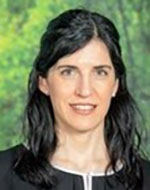 Leyre Azpilicueta is a Ramon y Cajal Fellow (Researcher & Professor) at the Public University of Navarre (UPNA), in Spain. From 2015 to 2022, she was an Associate Professor and Researcher at Tecnologico de Monterrey, Campus Monterrey, Mexico. She is actively involved in several professional and editorial activities, acting as reviewer, advisory board member, associate/guest editor of top-rank journals and TPC member of international conferences. Her research interests are on radio propagation, mobile radio systems, ray tracing, channel modeling, wireless sensor networks, electromagnetic dosimetry, IoT networks and devices, 5G communication systems and vehicular communications. She has received numerous awards and recognitions over the past few years, including the IEEE Mojgan Daneshmand, IEEE Raj Mittra, IEEE Rising Stars, IEEE APS PhD Award, Best PhD thesis by COIT, Santander Young Professors, Distinguished Professor, and best Paper Award at 4 international conferences.
Leyre Azpilicueta is a Ramon y Cajal Fellow (Researcher & Professor) at the Public University of Navarre (UPNA), in Spain. From 2015 to 2022, she was an Associate Professor and Researcher at Tecnologico de Monterrey, Campus Monterrey, Mexico. She is actively involved in several professional and editorial activities, acting as reviewer, advisory board member, associate/guest editor of top-rank journals and TPC member of international conferences. Her research interests are on radio propagation, mobile radio systems, ray tracing, channel modeling, wireless sensor networks, electromagnetic dosimetry, IoT networks and devices, 5G communication systems and vehicular communications. She has received numerous awards and recognitions over the past few years, including the IEEE Mojgan Daneshmand, IEEE Raj Mittra, IEEE Rising Stars, IEEE APS PhD Award, Best PhD thesis by COIT, Santander Young Professors, Distinguished Professor, and best Paper Award at 4 international conferences.
Panelists:
Leszek Raschkowski
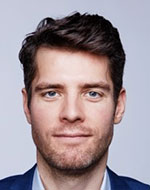 Leszek Raschkowski received the Dipl.-Ing. (M.S.) degree in Electrical Engineering in 2012 from Technische Universität Berlin, Germany. Currently, he is employed as a research associate and project manager at Fraunhofer Heinrich Hertz Institute (HHI) in Berlin, Germany. Leszek is working on several research projects in the field of wireless communication. From 2013 to 2022, he actively contributed to 3GPP standardization work related to the radio access network as a regular delegate. Recently, he has taken over the leadership of the Prototype Development and System Integration group in the Wireless Communications and Networks department. He is currently working on a GPU-accelerated ray-tracing-based radio propagation simulator and is responsible for the 5G testbed activities at HHI. His research interests include measurement, modeling and simulation of radio propagation channels and performance analysis of wireless communication systems. This encompasses 3D MIMO, industrial factory floor deployments, aerial vehicles (drones) and satellites.
Leszek Raschkowski received the Dipl.-Ing. (M.S.) degree in Electrical Engineering in 2012 from Technische Universität Berlin, Germany. Currently, he is employed as a research associate and project manager at Fraunhofer Heinrich Hertz Institute (HHI) in Berlin, Germany. Leszek is working on several research projects in the field of wireless communication. From 2013 to 2022, he actively contributed to 3GPP standardization work related to the radio access network as a regular delegate. Recently, he has taken over the leadership of the Prototype Development and System Integration group in the Wireless Communications and Networks department. He is currently working on a GPU-accelerated ray-tracing-based radio propagation simulator and is responsible for the 5G testbed activities at HHI. His research interests include measurement, modeling and simulation of radio propagation channels and performance analysis of wireless communication systems. This encompasses 3D MIMO, industrial factory floor deployments, aerial vehicles (drones) and satellites.
Chong Han
 Prof. Chong Han is a John Wu and Jane Sun Endowed Associate Professor with the University of Michigan-Shanghai Jiao Tong University (UM-SJTU) Joint Institute, Shanghai Jiao Tong University, China, and the Director of the Terahertz Wireless Communications (TWC) Laboratory. Since 2021, he has been affiliated with the Department of Electronic Engineering, Shanghai Jiao Tong University. He received the Ph.D. degree in electrical and computer engineering from the Georgia Institute of Technology, USA, in 2016. His research interests include Terahertz and Millimeter-wave communications. He was a recipient of 2018 Elsevier NanoComNet (Nano Communication Networks Journal) Young Investigator Award, 2017 Shanghai Sailing Program 2017, and 2018 Shanghai Chen-guang Program. He is the TPC Chair to organize multiple IEEE and ACM conferences and workshops. He is a Co-Founder and the Vice-Chair of IEEE ComSoc Special Interest Group (SIG) on Terahertz Communications since 2021. He is a Guest Editor with IEEE JSAC, JSTSP, and IEEE Trans. on Nanotechnology, an Editor with IEEE Open Journal of Vehicular Technology since 2020.
Prof. Chong Han is a John Wu and Jane Sun Endowed Associate Professor with the University of Michigan-Shanghai Jiao Tong University (UM-SJTU) Joint Institute, Shanghai Jiao Tong University, China, and the Director of the Terahertz Wireless Communications (TWC) Laboratory. Since 2021, he has been affiliated with the Department of Electronic Engineering, Shanghai Jiao Tong University. He received the Ph.D. degree in electrical and computer engineering from the Georgia Institute of Technology, USA, in 2016. His research interests include Terahertz and Millimeter-wave communications. He was a recipient of 2018 Elsevier NanoComNet (Nano Communication Networks Journal) Young Investigator Award, 2017 Shanghai Sailing Program 2017, and 2018 Shanghai Chen-guang Program. He is the TPC Chair to organize multiple IEEE and ACM conferences and workshops. He is a Co-Founder and the Vice-Chair of IEEE ComSoc Special Interest Group (SIG) on Terahertz Communications since 2021. He is a Guest Editor with IEEE JSAC, JSTSP, and IEEE Trans. on Nanotechnology, an Editor with IEEE Open Journal of Vehicular Technology since 2020.
Chris R. Anderson
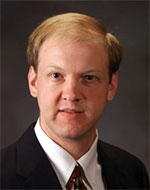 Dr. Chris R. Anderson is an Associate Professor of Electrical Engineering at the United States Naval Academy (USNA). He is the Founder and Director of the USNA Wireless Measurements Group (WMG), a focused research group that specializes in spectrum, propagation, and field strength measurements in diverse environments and at frequencies ranging from 300 MHz to 28 GHz. From 2016-2018 he served as a Visiting Researcher at the National Telecommunications Information Administration (NTIA) Institute for Telecommunication Sciences in Boulder, CO where he concentrated on developing propagation models for cluttered environments. His current research focuses on improving spectrum coexistence between active and passive technologies. Dr. Anderson is a former Editor of the IEEE Transactions on Wireless Communications.
Dr. Chris R. Anderson is an Associate Professor of Electrical Engineering at the United States Naval Academy (USNA). He is the Founder and Director of the USNA Wireless Measurements Group (WMG), a focused research group that specializes in spectrum, propagation, and field strength measurements in diverse environments and at frequencies ranging from 300 MHz to 28 GHz. From 2016-2018 he served as a Visiting Researcher at the National Telecommunications Information Administration (NTIA) Institute for Telecommunication Sciences in Boulder, CO where he concentrated on developing propagation models for cluttered environments. His current research focuses on improving spectrum coexistence between active and passive technologies. Dr. Anderson is a former Editor of the IEEE Transactions on Wireless Communications.
Taro Eichler
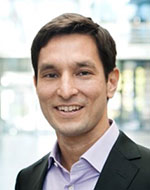 Taro Eichler is Technology Manager for Wireless Communications and Photonics at Rohde & Schwarz in Munich with a Focus On 5G/6G Technologies. With 15 years of experience in wireless communication, he is currently working on 6G industry research projects covering THz communication, photonics and reconfigurable intelligent surfaces (RIS). Prior to joining Rohde & Schwarz, Taro worked for Intel Corporation as specialist for photonic communication solutions and for NTT Basic Research Laboratories. He also worked on research projects at The University of Tokyo in the field of quantum optics with a scholarship by the Alexander-von-Humboldt foundation. He holds a diploma in physics from the Technical University of Munich with thesis at the Max-Planck-Institute for Quantum Optics and a Ph.D. in physics from the University of Bonn, Germany.
Taro Eichler is Technology Manager for Wireless Communications and Photonics at Rohde & Schwarz in Munich with a Focus On 5G/6G Technologies. With 15 years of experience in wireless communication, he is currently working on 6G industry research projects covering THz communication, photonics and reconfigurable intelligent surfaces (RIS). Prior to joining Rohde & Schwarz, Taro worked for Intel Corporation as specialist for photonic communication solutions and for NTT Basic Research Laboratories. He also worked on research projects at The University of Tokyo in the field of quantum optics with a scholarship by the Alexander-von-Humboldt foundation. He holds a diploma in physics from the Technical University of Munich with thesis at the Max-Planck-Institute for Quantum Optics and a Ph.D. in physics from the University of Bonn, Germany.
Tarun Chawla
 Tarun Chawla (Member, IEEE) received the B.S. degree in electrical engineering from Pennsylvania State University, in 2008. He joined Remcom, in 2009, and he is currently the Director of Business Development. His research interest includes millimeter-wave channel modeling.
Tarun Chawla (Member, IEEE) received the B.S. degree in electrical engineering from Pennsylvania State University, in 2008. He joined Remcom, in 2009, and he is currently the Director of Business Development. His research interest includes millimeter-wave channel modeling.
Panel 3: Non-Terrestrial Networks for Global Sustainable Connectivity
Date: Wednesday, 31 May 2023
Time: 11:30-13:00 CEST
Location: Cloud Auditorium
Description: With the growing demand of ubiquitous and reliable wireless connectivity, as well as the imperative for future communication networks that are environmentally sustainable, the option of non-terrestrial networks (NTNs) that are energy neutral seems as an attractive solution. NTNs embrace several tiers of off-the-ground serving nodes, mounted on devices that fly at heights as low as a few meters and up to no more than 100s of meters from the ground (such as unmanned aerial vehicles – UAVs) and moving up to high altitude platforms (HAPs) in the troposphere and the stratosphere (up to and over 20 km above the ground, respectively) to low earth orbit (LEO) and medium earth orbit (MEO), satellites, which fly at 160-2000 km and above 2000km heights, respectively. While these “flying” serving nodes can provide improved coverage compared to terrestrial layouts, their operation in the net-zero energy regime requires the combination of a number of relevant energy technologies (e.g. solar and radio harvesting, efficient energy storage and balancing, etc.), which should be optimized jointly with the communication system design (in terms of energy efficiency, including the RF, baseband and antenna units and within the link requirements and quality of service constraints).This proposed technical panel at ICC 2023 aims to showcase both the opportunity and the associated challenges of net-zero energy NTNs. The key technical areas that will be addressed are:
- Design of NTNs and their incorporation with the ground segment
- Net-zero energy technologies suited for non-terrestrial networks
- Energy consumption/generation/storage modelling and balancing
- Joint optimization of communication and energy resources
- UAV-based portable access
- Intelligent and energy-aware satellite communications
Organizers:
Christos Masouros
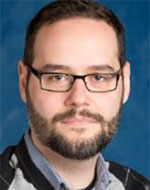 Christos Masouros (SMIEEE, MIET) received the Diploma degree in Electrical and Computer Engineering from the University of Patras, Greece, in 2004, and MSc by research and PhD in Electrical and Electronic Engineering from the University of Manchester, UK in 2006 and 2009, respectively. He is currently Full Professor in the Information and Communications.
Christos Masouros (SMIEEE, MIET) received the Diploma degree in Electrical and Computer Engineering from the University of Patras, Greece, in 2004, and MSc by research and PhD in Electrical and Electronic Engineering from the University of Manchester, UK in 2006 and 2009, respectively. He is currently Full Professor in the Information and Communications.
Engineering research group, Dept. Electrical and Electronic Engineering, University College London. He was the recipient of the Best Paper Awards in the IEEE GlobeCom 2015 and IEEE WCNC 2019 conferences, and has been recognized as an Exemplary Editor for the IEEE Communications Letters, and as an Exemplary Reviewer for the IEEE Transactions on Communications. He is an Editor for IEEE Transactions on Communications, and IEEE Transactions on Wireless Communications. He has been an Associate Editor for IEEE Communications Letters, and a Guest Editor for IEEE Journal on Selected Topics in Signal Processing issues “Exploiting Interference towards Energy Efficient and Secure Wireless Communications” and “Hybrid Analog / Digital Signal Processing for Hardware-Efficient Large Scale Antenna Arrays”. He is currently an elected member of the EURASIP SAT Committee on Signal Processing for Communications and Networking.
Web site: https://iris.ucl.ac.uk/iris/browse/profile?upi=CMASO14
Constantinos B. Papadias
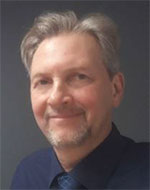 Constantinos B. Papadias (Fellow, IEEE) is the founding Executive Director of the Research, Technology and Innovation Network (RTIN) of The American College of Greece (ACG), where he is also Professor, Head of the Smart Wireless Future Technologies (SWIFT) Lab and Scientific Director of the ACG Research Center (ACG-RC). He has published over 220 papers and 4 books and has received over 10000 citations for his work, with an h-index of 46. He has also made standards contributions and holds 12 patents. He was the Research Coordinator of the EU project PAINLESS on the topic of energy autonomous infrastructure-less wireless networks (2018-2022) and is currently the Technical Coordinator of the EU CHIST-ERA project FIREMAN on IoT networks. His distinctions include the Bell Labs President’s Award (2002), the IEEE Signal Processing Society’s Young Author Best Paper Award (2003), and a Bell Labs Teamwork Award (2004) and a recent Best Paper Award at Globecom 2022. He was a Distinguished Lecturer of the IEEE Communications Society for 2012 -2013. He is a Fellow of IEEE since 2013 and Fellow of the European Alliance of Innovation (EAI) since 2019. He was recently elected Director-at-Large of the IEEE Signal Processing Society for Region 8 (Europe, Middle East and Africa).
Constantinos B. Papadias (Fellow, IEEE) is the founding Executive Director of the Research, Technology and Innovation Network (RTIN) of The American College of Greece (ACG), where he is also Professor, Head of the Smart Wireless Future Technologies (SWIFT) Lab and Scientific Director of the ACG Research Center (ACG-RC). He has published over 220 papers and 4 books and has received over 10000 citations for his work, with an h-index of 46. He has also made standards contributions and holds 12 patents. He was the Research Coordinator of the EU project PAINLESS on the topic of energy autonomous infrastructure-less wireless networks (2018-2022) and is currently the Technical Coordinator of the EU CHIST-ERA project FIREMAN on IoT networks. His distinctions include the Bell Labs President’s Award (2002), the IEEE Signal Processing Society’s Young Author Best Paper Award (2003), and a Bell Labs Teamwork Award (2004) and a recent Best Paper Award at Globecom 2022. He was a Distinguished Lecturer of the IEEE Communications Society for 2012 -2013. He is a Fellow of IEEE since 2013 and Fellow of the European Alliance of Innovation (EAI) since 2019. He was recently elected Director-at-Large of the IEEE Signal Processing Society for Region 8 (Europe, Middle East and Africa).
Web site: https://acg150.acg.edu/persons/constantinos-b-papadias/
Panelists:
- Mohammed Slim Alouini, King Abduallah University of Science and Technology (Non-Terrestrial Network Design)
- Giovanni Geraci, Universitat Pompeu Fabra (UAV-based & Satellite Comms)
- Jimmy Nielsen, Aalborg University (Machine Learning Techniques for Portable Access Points Optimization)
- Petar Popovski, Aalborg University (Low Latency / Highly Reliable NTNs)
- Rahim Tafazolli, University of Surrey (Networks Beyond 5G)







